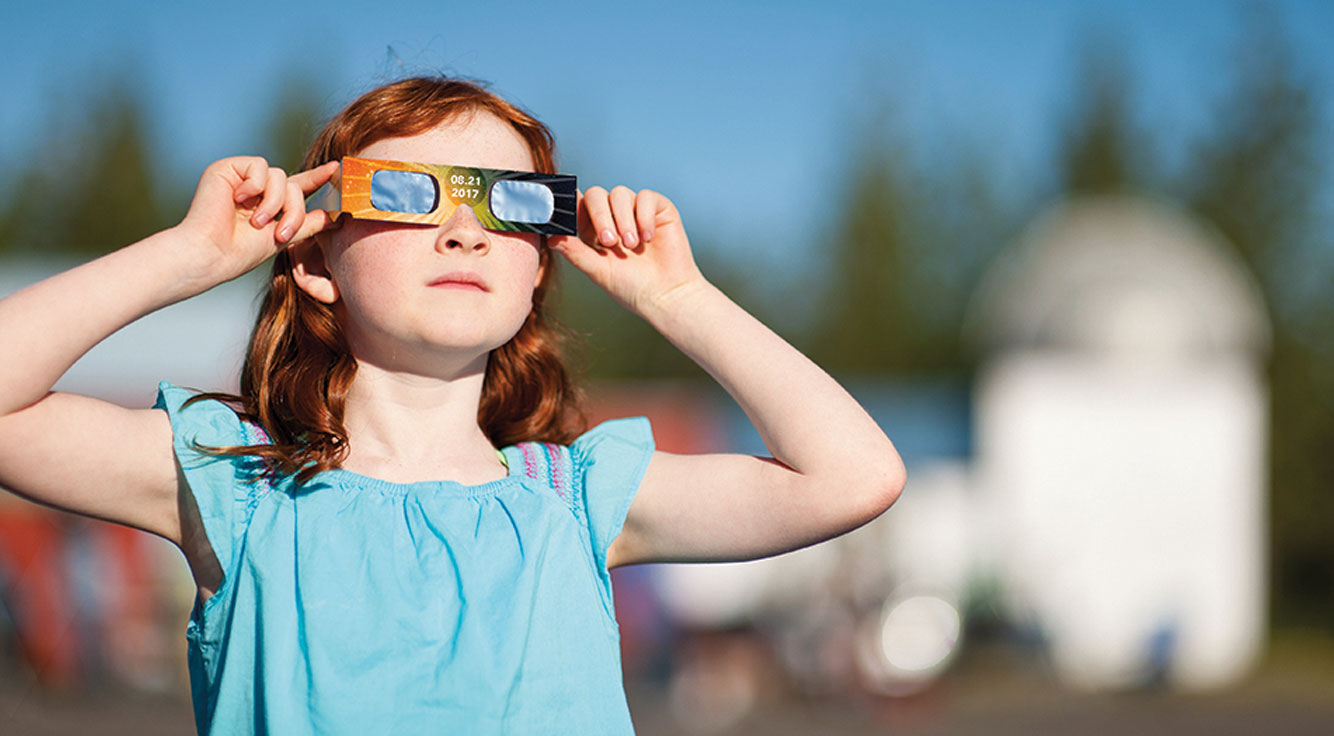
Eye safety for the eclipse in the Northwest
This summer, Oregonians will have a rare chance to see a total solar eclipse. On August 21, 2017, the moon will pass between the sun and Earth, completely blocking the sun from view. The moon’s shadow (or, the umbra) will sweep across the land, turning day into night.
The total eclipse will be visible across the United States in a path 60 to 70 miles wide (a partial eclipse will be visible across a wider area). There won’t be another solar eclipse of this magnitude for 400 years.
Don’t be fooled when the sun is hidden
Some rays of the sun will peak around the moon in a halo, but try to avoid looking at it directly. When you’re not seeing the full sun, it can feel much safer to look at it directly than it actually is. If you and your family are viewing the eclipse, it’ll be important to take special precautions to protect your vision.
Coincidentally, August is also Children’s Eye Health and Safety Month. So plan ahead to keep your family’s eyes safe not just during the eclipse, but in all seasons and in any weather.
Get the facts on eye safety
Anthony Cirino, MD, an ophthalmologist with Kaiser Permanente Interstate Medical Office Central, took the time to answer some common questions about eye safety, especially when it comes to the upcoming eclipse.
Q: What happens when you don’t protect your eyes?
A: Staring directly at the sun or at a solar eclipse can harm your retinas, which are home to the light-sensing cells that make vision possible. Overstimulated by intense sunlight, the retinas release chemicals that may cause solar retinopathy. This damage is often painless, so people won’t realize what’s happened until it’s too late.
Usually, most of us can’t tolerate staring at the sun long enough to cause trouble. But a solar eclipse makes viewing the sun easier, less uncomfortable, and considerably more dangerous than usual.
Q: What damage occurs, and how quickly does it take effect?
A: The most common symptoms are short-term “afterimages” that last for hours to days, blurred vision, and portions of missing vision. Although total blindness isn’t likely, one’s central vision most commonly suffers long-term damage.
Q: Why use eclipse protection versus making your own viewing device, or just taking a direct peek at this awesome phenomenon? What would you recommend? And why?
A: Never stare at the eclipse. The best way to protect your eyes is to wear special filtered eyewear protection designed specifically for a solar eclipse — rather than using sunglasses or homemade viewing devices. Don’t take unnecessary chances with an eclipse.
Q: What happens if you don’t protect your sight during an eclipse or if you don’t wear sunglasses every day, even in cloudy weather?
A: Think of sunglasses as sunblock for the eyes. Protect your eyes from direct and indirect sun by always wearing sunglasses, even on cloudy days — and never look right into the sun. You’ll safeguard the retina and other parts of the eye that normally absorb potentially harmful ultraviolet and similar rays. Besides, sunglasses make you look cool!
Practice good eye care throughout the year
As Dr. Cirino points out, your eyes need loving attention throughout the year. This includes regular exams to keep tabs on your vision and make sure your eyes are healthy. Visit kp.org to learn more about the eye care available for you and your family.
In the Spotlight ― Find out what’s happening in your area:





